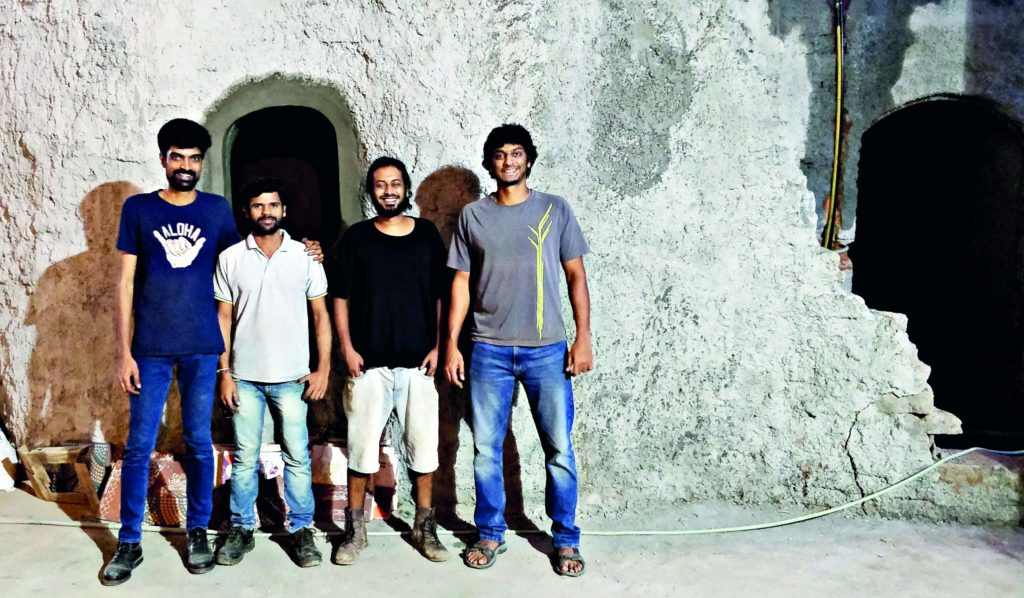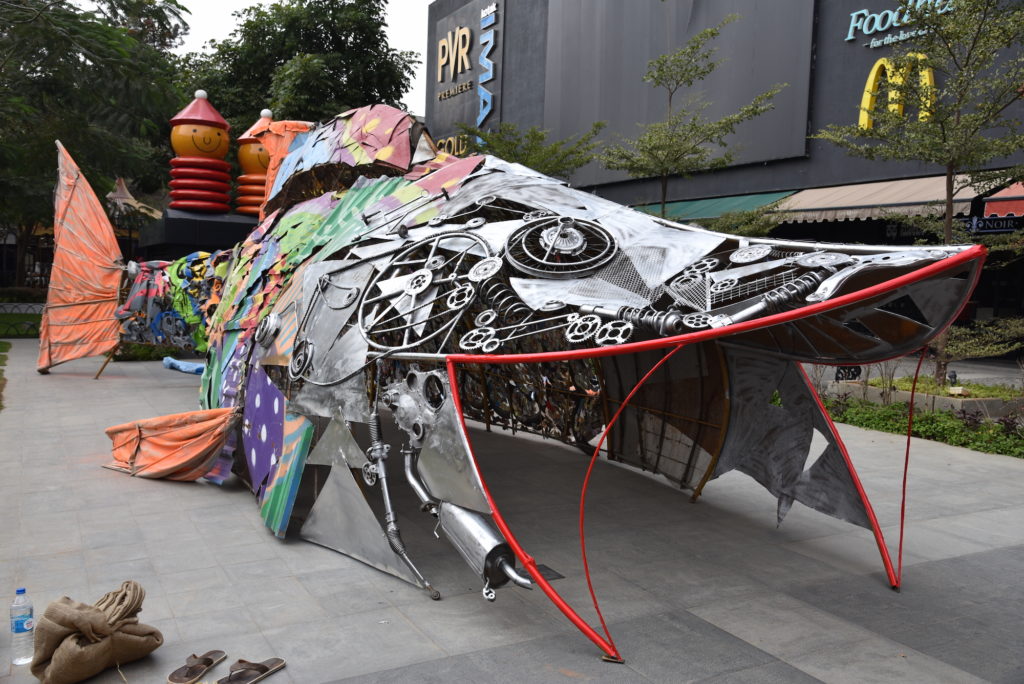The recently concluded Whitefield Art Collective (WAC) 2020 in Bengaluru explored creative exploration through sustainability.
In a bid to use art to make it accessible and convey an ecological message the 5th edition of the Whitefield Art Collective was supported by Yuj Kutumb and the venue was sponsored by VR Bengaluru as part of its Connecting Communities Through Art program.
Sustainability Cues
One of the artists showcased was the team behind Bangalore Creative Circus (BCC). Located in a 20000 square feet warehouse this was created to act as a bridge between art, science and sustainability. “We got access to the space in May 2019 and we have been doing fun things out of it ever since. The idea behind the space is act as Bangalore’s sustainability hub and we are currently building out several things at the space to promote and showcase solutions around sustainability,” says Ajay Raghavan, Founder, BCC. The collective displayed Rahul KP and Nithin Sadhu’s creation Namma ‘Tiger of the Cauvery’ as an ode to the Humpback Mahseer, often referred to as the ‘Tiger of the Cauvery river’ which is on the brink of extinction. “Created with scrap collected from trash collection drives along the Cauvery river and across Bangalore, we would like to bring much-needed attention to how close the issue of sustainability and the effects of climate change is. ‘Does our development plan for the future accommodate such unique and rare species’ is our message,” aver the duo. The installation was commissioned by The Wildlife Association of South India (WASI) to draw attention to its conservation efforts. “We intend to use art and science as a medium to draw people’s attention to sustainability and climate change. The space is being built out like a museum where people will go through a journey of understanding the science behind climate change and then be presented with solutions that will allow them to live more sustainably,” says Raghavan.

Social Messaging
While one part of the space is focused on helping art and creativity thrive in the city, the team is creating an art studio and an art collaborative where different types of art and artist can work together at BCC. “We are currently collaborating with a bunch of visual artists who use scrap as their medium to build art installations. While the artists working out of the space have built several installations, the ones that we recently showcased at the VR Bengaluru art festival was a 40 feet Masheer and a 10-foot Peacock, both made out of scrap,” says Raghavan. The artists incidentally used several different (largely scrap) materials to build an interactive art installation that draws awareness to the Humpback Mahseer. The installation is a 40 X 12-foot scaled model built from scrap items. Scrap items are collected from Bangalore and via trash collection drives along the Cauvery river. The installation is large enough to allow participants to enter through the mouth. Once inside, people can interact with a range of content regarding the fish’s ecology and habitat. “Art can be quite provocative and is often a great tool to draw people’s attention to difficult issues. We believe that we will be able to effectively use the medium of art to convey several messages that we want to deliver around the environment,” adds Raghavan.

Art Unlimited
The basic premise on which the WAC was conceptualised was to connect communities through art. “Through the WAC we wanted to give artists what they wanted, a platform for their expressions of creativity and get the recognition and exposure that they deserve. Over the last five years since WAC began, we have provided student artists an opportunity to display their works amid works of senior artists through many collaborations,” says Sumi Gupta, Curator, WAC 2020. This edition is unique because the theme of sustainability has been embraced by all the students in the installations as well as the workshops for children, the Wearable Art Show put together by the JD Institute of Fashion Technology or the interactive events coordinated by Artflute, all reflect the theme of sustainability. ‘Preserve the Pride’ an installation that derives its inspiration from the doorway of a Buddhist shrine at Ajanta cave by Bandana Jain was also on display. Artist Samson Anthony’s installation, Acrylic on Fibre, an interpretation of Salvador Dali’s ‘Persistence of Memory’and Artist Romicon Revola augmented reality installation, The Digital Wave also had their own messages. The Aravani Art Project aimed at creating a collective space for people from the transgender community by engaging them into public art and other intervention through the Harmony project and the VR Art Car was also part of the Collective. “The Art Car by Aravani is a call for acceptance and coexistence and not with a sense of apathy or panic. They envision a culture that is regenerative, resilient and thriving for all of humanity,” says Divya Runwal, Artist, Aravani Art Project. Art can have myriad dimensions and when it makes a difference like this you know it has its heart in its right place.
This story first appeared in The New Indian Express dated April 19 2020 here:
